Contents
The Square-foot gardening method is a super popular way to layout your vegetable garden. Founder Mel Bartholomew founded this method over 20 years ago; his creative square layout, custom soil mix, and a handful of books make this way of gardening a popular choice for many home gardeners.
His basic method looks something like this: build a 4’x4’x6” raised bed with untreated lumber, fill it with his special soil mix, and then create a wooden grid on top make 1’x1’ squares (each for a different plant and quantity). For example, he recommends 1 tomato per square or 16 carrots per square.
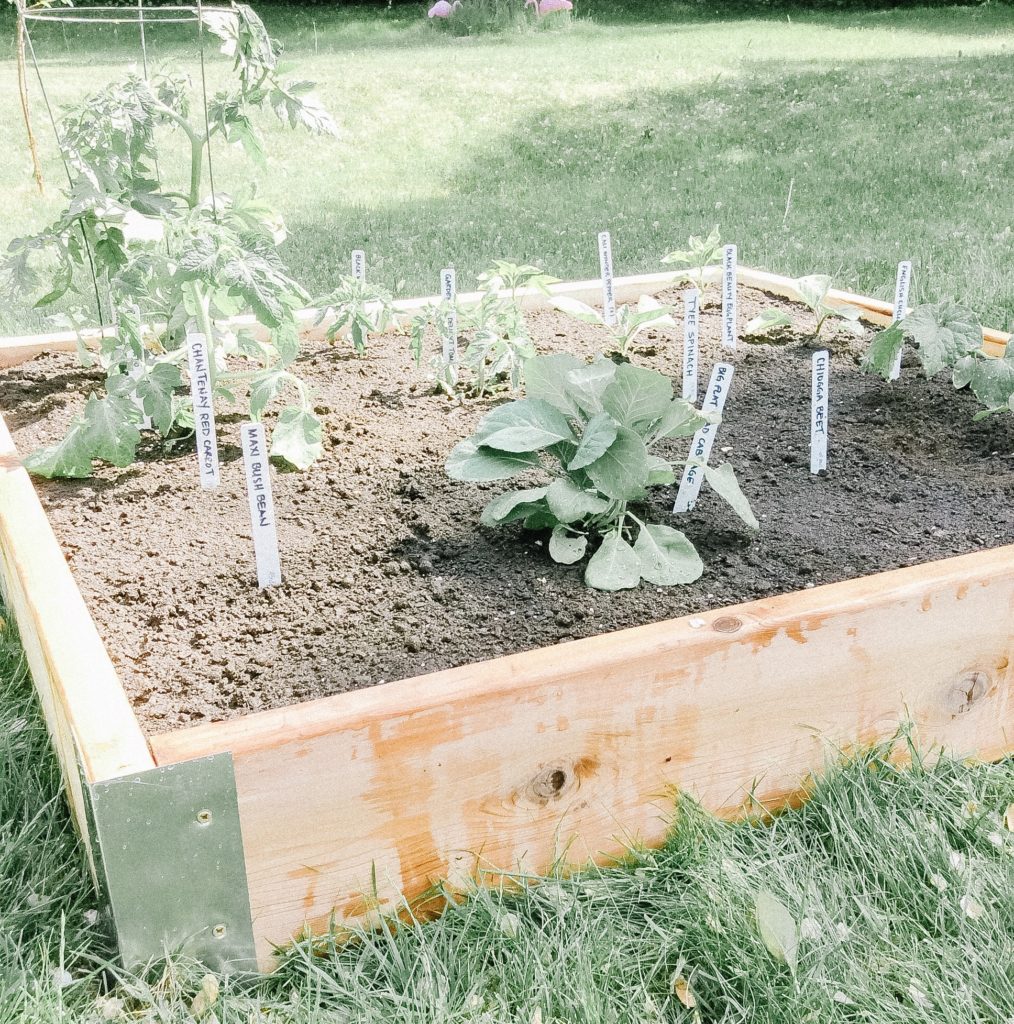
I have used it for quite some time now when planning and planting my garden and do like it for some of its features such as the ability for it to save space and fit more veggies in a small space. But along the way, I did notice some things that I didn’t like about it, and that’s what I want to go through with you here today: what I learned about using the SQ FT garden method! Let’s get into it.
What I Learned Using the Square Foot Garden Method
1. It’s Not Enough Space for Most Plants
I’m not sure where they think they are going with fitting 1 tomato in 1 sq. ft. If you’ve ever seen a full-grown tomato, it’s massive!! Same goes for a pepper plant. And then there’s the problem of sprawling cucumber and zucchini plants, they take up even more space than a tomato. I think it’s a little unrealistic to think that you can fit 1 tomato per square and have a successful harvest.
I have tried it and it was a mess. The tomatoes were hard to harvest because there wasn’t a lot of arm room in between each plant, the leaves and fruits didn’t get enough airflow, and if you miss that sweet spot timing for trellising your tomatoes, good luck getting in there and staking them apart without breaking a stem.
2. It’s Not Deep Enough
The recommended 6” depth of the raised beds he uses are generally only enough root space for lettuce. Most other veggies require a deeper bed for their roots. I like to do a minimum of 12” depth.

3. Added Cost & Annoyance of Wood Grid
The recommended DIY wooden grid to me is an unnecessary DIY and cost. While it does visually divide it all up, I don’t like the way it looks. I think with a garden plan and a tape measure you can easily avoid having to build that.
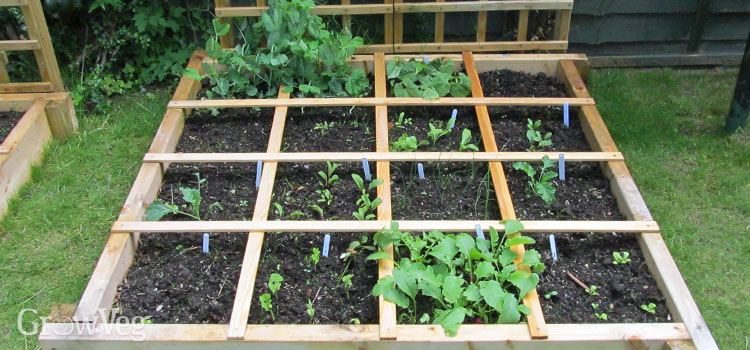
photo from growveg.com
4. Requires More Maintenance
Since everything is planted so close together you really have to be on top of it all: weeding, thinning, trellising, harvesting etc. You don’t get that forgiving extra space. For example, if I am planting 16 carrots in 1 sq. ft. and I miss thinning day since they are so close together I won’t get that long, thin carrot I am hoping for because there is not enough extra space for the root to grow. Or if I missed weeding, and the weed gets too big, pulling it might harm the other root systems in the box.
In Conclusion
I like to keep the square foot garden method in the back of my head and use as a rule of thumb. I usually combine row planting (organizing different plants into a row of each variety) with square foot. I like to plant veggies as close as possible for optimal growth and maintenance, but not all of the sq. ft. methods spacing recommendations I agree with. I put together some free sq. ft garden plans using the spacing I like, download them below there for free! There are 3 sizes, so one will surely fit your space!

Below is a list of what plants I use the sq. ft. method for and which ones require more space.
I Don’t Use the Sq. Ft. Method For:
- Tomatoes
- Peppers
- Cucumbers
- Zucchini
- Ground cherries
- Melons of any kind.
- Pumpkins
- Squash
- Spinach
- Kale/swiss chard
- Peas/beans
I Use the Sq. Ft. For:
- Carrots
- Radish
- Green onions
- Loose-leaf lettuce mix
- Eggplant
- Broccoli
- Cabbage
- Cauliflower
- Herbs
I would love to know if you’ve tried the sq. ft. garden method, and what you thought! Let me know in the comments.
-ABBAGAIL
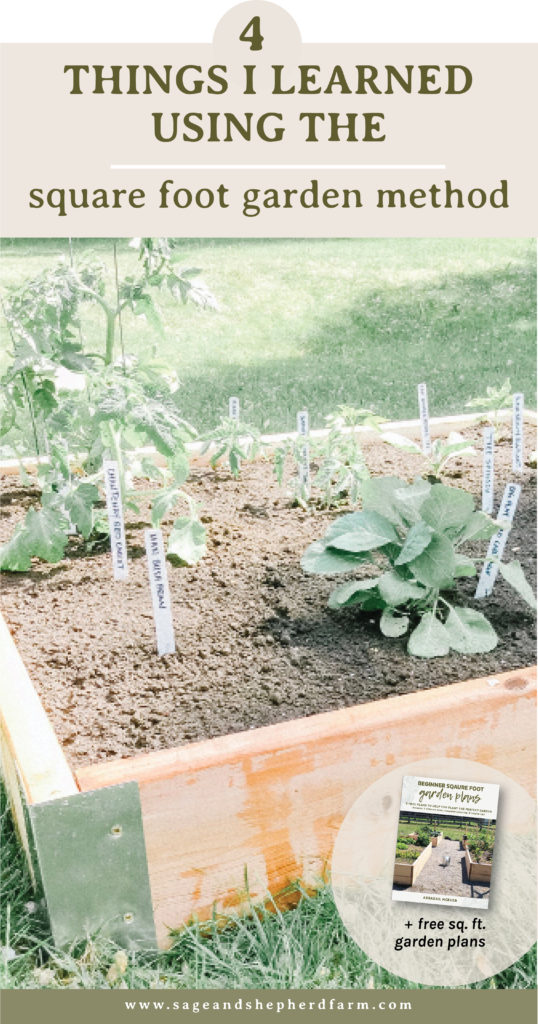
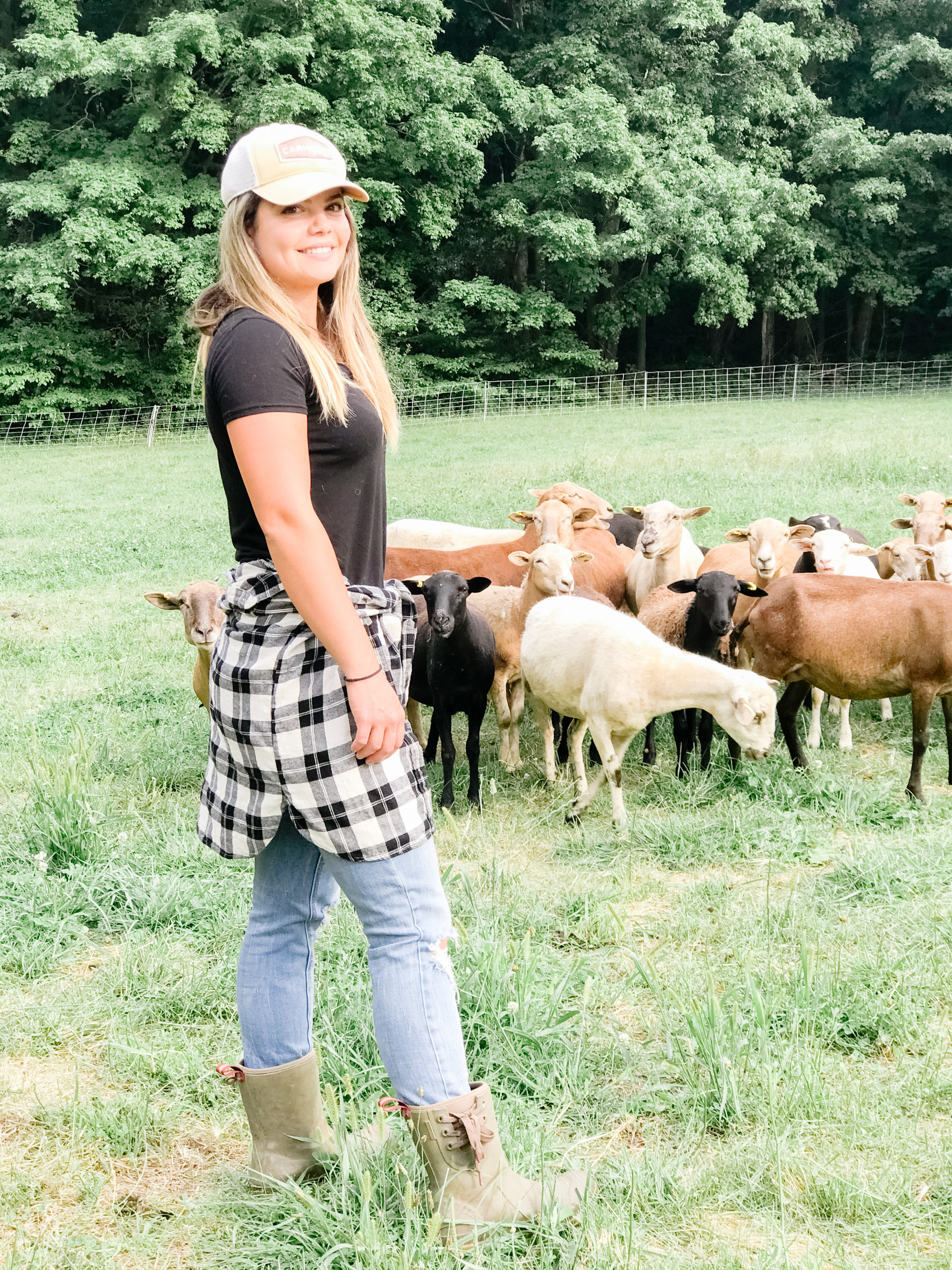
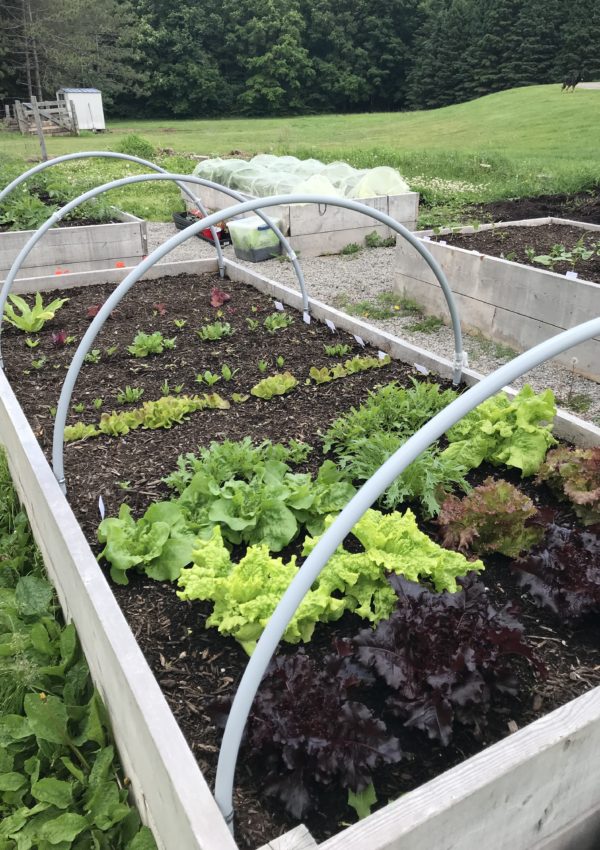

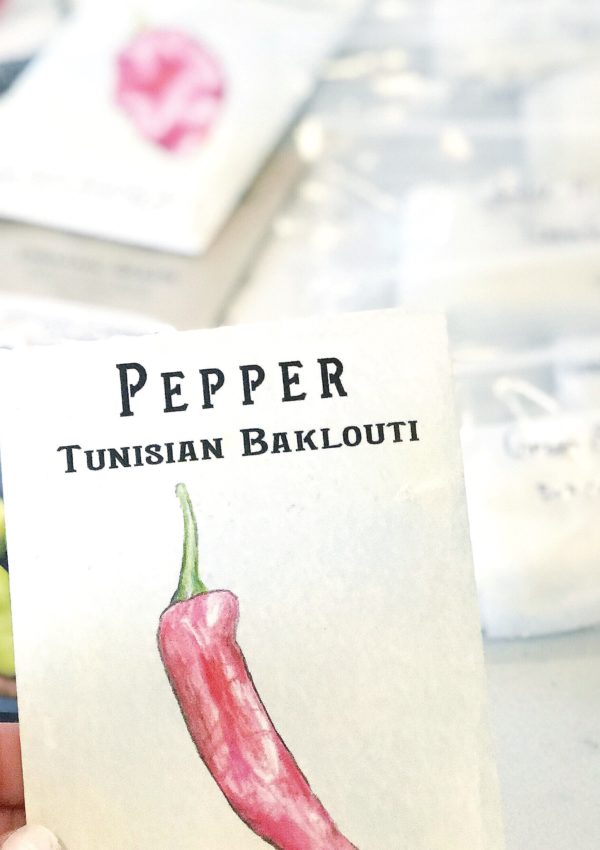
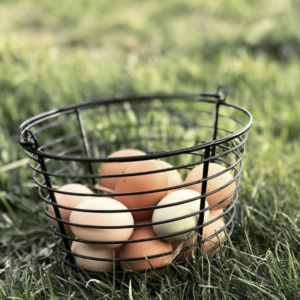
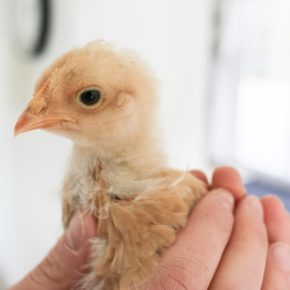
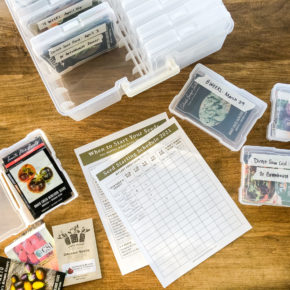
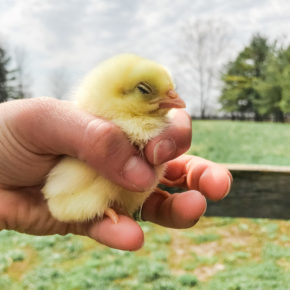
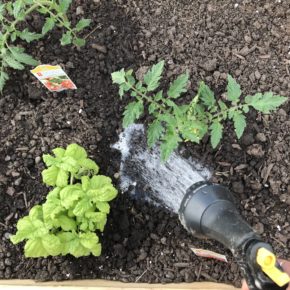
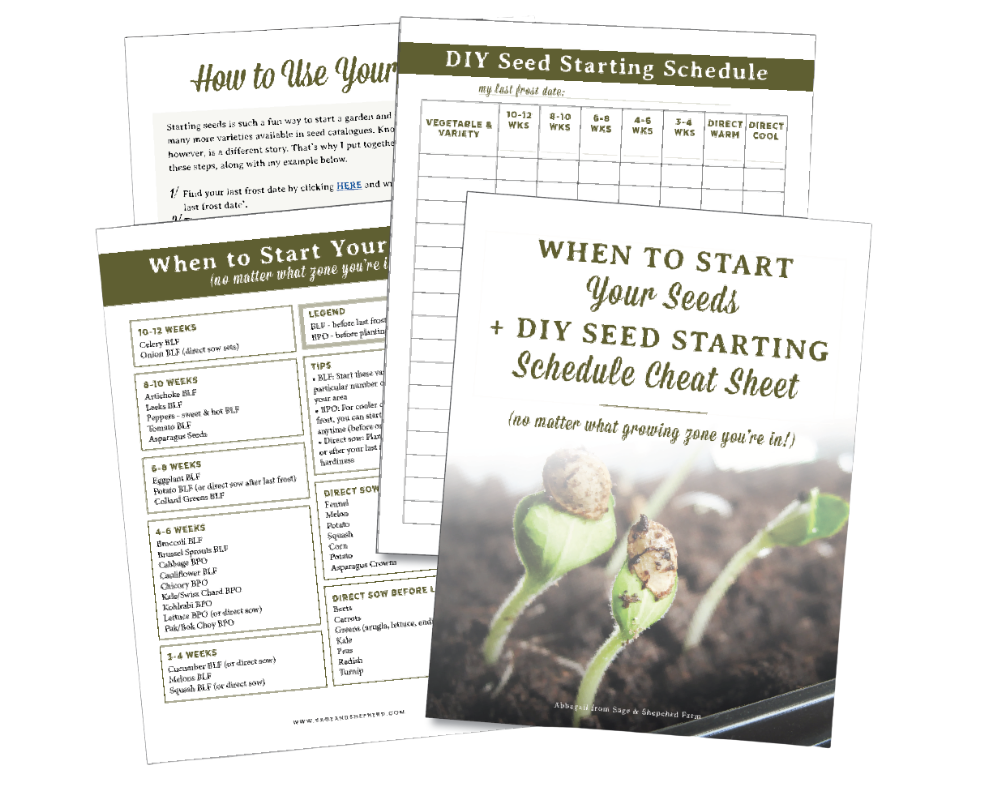
Leave a Reply